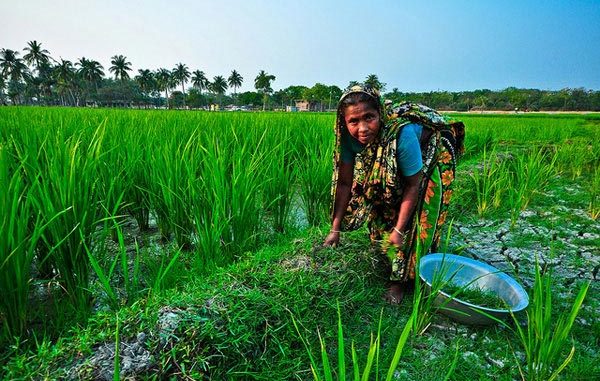
About 65% of women are employed in the agriculture sector in the state as opposed to 44% of men. While the number of hours spent by women farmers working in fields has gone up, their wages have actually decreased. For male farmers, on the other hand, the opposite holds true.
New Delhi: Indian agricultural sector is undergoing feminisation, i.e., the rising share of farm work is now being undertaken by women. Gujarat, however, is seeing what could be termed as “feminisation out of compulsion” or “feminisation of agrarian distress” – women are taking up more work under duress due to men having stepped away from the activity, a study has found.
While the number of hours spent by women farmers working in fields has gone up, their wages have actually decreased. For male farmers, on the other hand, the opposite holds true. With agriculture no longer considered a profitable occupation, the involvement of women as cultivators might not be financially empowering.
Men have moved out of agriculture as main workers and continue only as marginal workers. The role of women, however, has increased in both main work and marginal work. Over 43.92 lakh women in Gujarat are working on farms, the study by Itishree Patnaik, assistant professor at Gujarat Institute of Development Research, has found.
Titled ‘Farmers of Future: Challenges of Feminization of Agriculture in India’, the study covers 16 villages in Patan, Valsad, Rajkot and Panchmahal districts of the state – which were chosen for their distinct cropping patterns and socio-economic profiles, according to an Indian Express report.
Using 2011 Census data on Gujarat’s total workforce, Patnaik states that about 65% of women are employed in the agriculture sector as opposed to 44% of men. The state has a total of 12.03 lakh women cultivators and 31.89 lakh agriculture labourers.
While as per the Census data, 10% of Gujarat’s women own land, during the house-listing exercise of over 3,000 houses in the surveyed districts, it was found that the figure was a mere 3%. According to Patnaik, 1.3% of these women were not even aware that land ownership was in their name.
The professor told the English daily: “The analysis shows that basic social and economic protection is missing for a large portion of the rural population because of which women, as the cheapest and weakest labour in households, are falling back on agriculture. Whereas, men are moving out of the farms altogether. To change the situation, it is essential to put the focus on women in the overall development plans and policies of agriculture.”
The study further states that while the number of Gujarat women farmers working on their farms is higher as compared to men, they lack the mobility to work outside. A greater number of women undertake strenuous and time-consuming chores – such as weeding, cleaning of farms, storing and livestock rearing – as compared to men.
“Male members hardly help the women in household chores. It is a matter of concern whether the labour time they spend and the incomes they earn match,” the report claims.
Source: The Wire

Leave a Reply